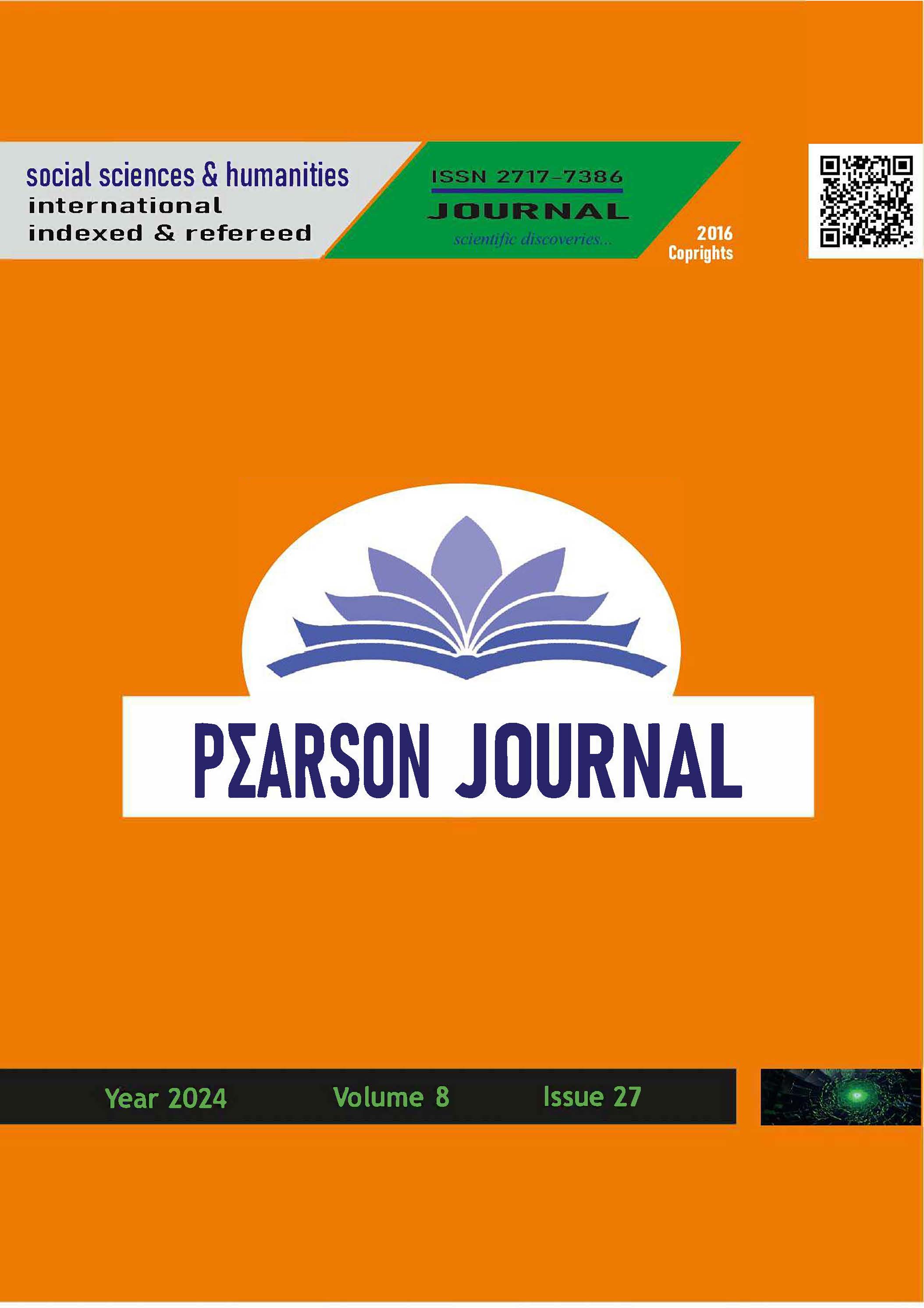“Mixed Methods Research” from a Scientific Study Perspective
DOI:
https://doi.org/10.5281/zenodo.10829512Keywords:
Scientific Research, Mixed Method, Pragmatism, Paradigm, Quantitative-Qualitative ApproachAbstract
Scientific research as a way to reach scientific knowledge is carried out based on different philosophical assumptions. Quantitative and qualitative methods, which form the basis of scientific research, have been shaped according to the perspectives of the positivist and interpretative paradigm. Pragmatism-based mixed method research, which is preferred as a third way instead of quantitative or qualitative researches, is accepted as a different way of reaching scientific knowledge. The mixed method has integrated quantitative and qualitative research methods using different research designs. In this way, mixed method research, which enables the handling of events and facts in a multidimensional way, has provided a more comprehensive answer to research questions. In the research, the functions of the method are revealed with different features than quantitative and qualitative methods in order to handle the mixed method in a holistic manner. In addition, by describing mixed method research designs, the possibilities of combining quantitative and qualitative methods were explained. As a result of the research, it was determined that the combination of quantitative and qualitative methods of the mixed method enriches the research data and provides opportunities to develop alternative ways to solve research problems. Shaping mixed method research designs with time and paradigm-oriented distinctions provided the researcher with freedom in planning the study process; It was stated that comprehensive results can be obtained by complementing the quantitative and qualitative research findings.
References
Akarçay Ulutaş, D. ve Ustabaşı Gündüz, D. (2018). Karma Araştırma Tasarımı. Ş. Aslan (Ed.), Sosyal Bilimlerde Araştırma Yöntemleri içinde (s. 439-452). Konya: Eğitim Yayınevi.
Akarsu, B. ve Akarsu, B. (2019). Bilimsel Araştırma Tasarımı. İstanbul: Cinius Yayınları.
Aslan, Ş. ve Güzel, Ş. (2018). Araştırma Yöntemlerine Giriş. Ş. Aslan (Ed.), Sosyal Bilimlerde Araştırma Yöntemleri içinde (s. 33-45). Konya: Eğitim Yayınevi.
Aslan, Ş. ve Uyar, S. (2018). Akademik Yazım. Ş. Aslan (Ed.), Sosyal Bilimlerde Araştırma Yöntemleri içinde (s. 489-507). Konya: Eğitim Yayınevi.
Bryman, A. (2006). Integrating Quantitative and Qualitative Research: How is It Done? Qualitative Research, 6 (1): 97-113.
Chandler, D. ve Munday, R. (2018). Medya ve İletişim Sözlüğü. (B. Taşdemir, Çev.) İstanbul: İletişim Yayıncılık.
Creswell, J. W. (2017). Araştırma Deseni. (S. B. Demir, Çev. Ed.). Ankara: Eğiten Kitap.
Creswell, J.W. ve Plano Clark, V.L. (2018). Designing and Conducting Mixed Methods Research (3rd ed.). Sage Publications.
Denzin, N. ve Lincoln, Y. (2000). Handbook of Qualitative Research. London: Sage Publication Inc.
Doyle, L., Brady A.M. ve Byrne G. (2009). An Overview of Mixed Methods Research. Journal of Research in Nursing. 14(2): 175-185. doi:10.1177/1744987108093962
Dunning, H., Williams, A., Abonyi, S. ve Crooks, V. (2008). A Mixed Method Approach to Quality of Life Research: A Case Study Approach. Social Indicators Research, 85, 145-158.
Greene, J.C., Caracelli, V.J. ve Graham, W. F. (1989). Toward a Conceptual Framework for Mixed-Method Evaluation Designs. Educational Evaluation and Policy Analysis, 11(3): 255-274. https://doi.org/10.2307/1163620
Jick, T.D. (1979). Mixing Qualitative and Quantitative Methods: Triangulation in Action. Administrative Science Quarterly, 24: 602-611.
Johnson, R. B., Onwuegbuzie, A. J. ve Turner, L. A. (2007). Toward a Definition of Mixed Methods Research. Journal of Mixed Methods Research, 1(2): 112-133. https://doi.org/10.1177/1558689806298224
Johnson, R.B. ve Onwuegbuzie, A.J. (2004). Mixed Methods Research: A Research Paradigm Whose Time Has Come. Educational Researcher, 33: 14-26. http://dx.doi.org/10.3102/0013189X033007014
Karasar, N. (2007). Bilimsel Araştırma Yöntemi. Ankara: Nobel.
Östlund, U., Kidd, L., Wengström, Y. Ve Rowa-Dewar, N. (2011). Combining Qualitative and Quantitative Research within Mixed Method Research Designs: A Methodological Review. International Journal of Nursing Studies, 48(3): 369-383. https://doi.org/10.1016/j.ijnurstu.2010.10.005
Plano Clark, V.L. ve Ivankova, N.V. (2016). Mixed Methods Research. A Guide to the Field. Sage Publications.
Punch, K. F. (2020). Sosyal Araştırmalara Giriş. Nicel ve Nitel Yaklaşımlar (D. Bayrak, H.B. Arslan, Z. Akyüz, Çev.). Ankara: Siyasal Kitabevi.
Robson, C. (2017). Bilimsel Araştırma Yöntemleri Gerçek Dünya Araştırması. (Ş. Çınkır ve N. Demirkasımoğlu, Çev. Ed.). Ankara: Anı Yayıncılık.
Sönmez, V. ve Alacapınar, F.G. (2019). Örneklendirilmiş Bilimsel Araştırma Yöntemleri. Ankara: Anı Yayıncılık.
Şimşek, A. (2015). Alanyazın Taraması. A. Şimşek (Ed.), Sosyal Bilimlerde Araştırma Yöntemleri içinde (s. 52-79). Eskişehir: Anadolu Üniversitesi.
Şimşek, A. (2015). Araştırma Modelleri. A. Şimşek (Ed.), Sosyal Bilimlerde Araştırma Yöntemleri içinde (s. 80-106). Eskişehir: Anadolu Üniversitesi.
Tashakkori, A. ve Teddlie, C. (1998). Mixed Methodology: Combining Qualitative and Quantitative Approaches. Thousand Oaks: Sage Publications.
Tashakkori, A. ve Creswell, J. W. (2007). The New Era of Mixed Methods. Journal of Mixed Methods Research, 1, 3–7.
Teddlie, C. ve Tashakkori, A. (2009). Foundations of Mixed Methods Research: Integrating Quantitative and Qualitative Approaches in the Social and Behavioral Sciences. Los Angeles: Sage.
Terrell, S. (2012). Mixed-Methods Research Methodologies. The Qualitative Report, 17(1): 254-280. http://www.nova.edu/ssss/QR/QR17-1/terrell.pdf
Türkoğlu, O. ve Gökçe, O. (2018). Sosyal Bilimlerde Araştırma Yöntemi. İstanbul: Çizgi Kitabevi.
Yıldırım, A. ve Şimşek, H. (2013). Sosyal Bilimlerde Nitel Araştırma Yöntemleri. Ankara: Seçkin Yayıncılık.
Downloads
Published
How to Cite
Issue
Section
License
Copyright (c) 2024 PEARSON JOURNAL

This work is licensed under a Creative Commons Attribution 4.0 International License.



